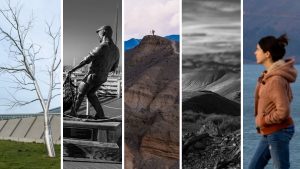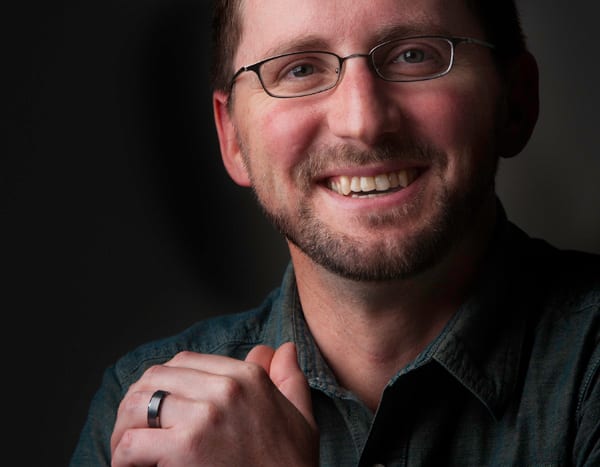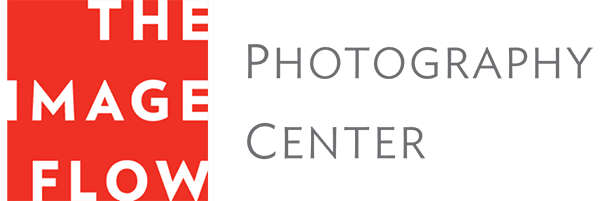

Anthony Fendler says he’s just a hobbyist photographer—his real passion is digital printing. “My Photoshop experience goes back to 1992 with version 2.5 beta,” he says. “In high school we were producing professional work using the only color-capable Macintosh on campus.”
He joined the Graphic Design department at Chico State University. In the school’s Print Management program, Fendler says, he learned everything about how to run a large-scale print shop, from accounting, to pre-press, color separation, and creating print-ready files that drive massive web presses. But he shifted his focus away from commercial printing after a class trip to Sacramento.
“When starting up a big web press, even the most expert operator needs to run a through certain amount of paper before the color looks right. During our visit to a state-of-the-art commercial print facility, we learned that they had wasted about 10 pallets of paper that morning before the results were good enough to deliver to the client. That’s brand new paper that goes straight back into the recycling loop.”
After that trip Fendler became disenchanted with the environmental impact of the commercial printing industry. Fortunately, Chico State was also at the forefront of digital photo printing. He worked under Byron Wolfe, a photography professor in the Graphic Design department. Wolfe had a relationship with Epson to test new printers that allowed him to innovate and push the boundaries of what could be done with early inkjet printers. Herewith, Fendler, the newest addition to The Image Flow team, answers five questions on photography, technology, and how they intersect.
TIF: Do you remember the first photograph you printed?
AF: I don’t remember the subject of the first photograph I ever printed but I do remember the first one where I was genuinely pleased with the output. At Chico State we had a set of early Epson photo inkjets that had been modified to use after-market inks in bulk-feed systems. For the first time, I had the sense that there wasn’t a compromise involved in making digital prints.
During that era digital printing was still somewhat second class; it was trying to be as good as what people would consider to be “real photography.” We had finally reached a point where there wasn’t a compromise in output quality or longevity—on the black and white especially. The black ink set used six dilutions of carbon-based ink and the prints we could produce were superior in all ways to traditional silver-based black and white prints. We could print on 100% cotton archival paper and there wasn’t any chemistry involved—the image was going to look great for as long as the paper held together. Gone was the nagging feeling that what came off of the digital printer could be better. That’s the moment that I would consider important. We had gotten there.
Do you have a favorite printer?
At Marin Filmworks we had one Epson Stylus Pro 9600. That’s my favorite printer because it was so idiosyncratic. The color profiles and the driver software were not as good as they are today, but everything else about it was amazing. The hardware that was hand-built in Japan, the UltraChrome ink set, and the print-head technology was certainly the best in the inkjet printing world—but it still required a light touch and some good old-fashioned trial-and-error to be able to generate a solid professional result. It was my job to make those prints 100% as good as they could be and it was interesting for me to be able to get to know that printer in the process. To be able to squeeze the last 1% of quality out of it—that was the fun part.
What makes the good picture stand out from the average?
It depends on who’s looking at it. One thing that can make a picture stand out is to get it in front of a whole lot of eyeballs. Working with Frans Lanting, I’ve had an opportunity to see the hit-making apparatus at work—I imagine it as the unknown recording artist and everything that the music labels do to make that person famous. National Geographic has that power for photography. They are well-regarded as the organization that knows what the best photography looks like it and how to make it—who to hire, how to access the situations that are worth photographing, and then to make the best photographs of those situations.
There are a lot of different reasons why a photograph could be a good one, but I like to evaluate which photograph is communicating most effectively. Is the final product either more successful or less successful? Can you crop the image differently, can you refine the composition, or can you change the contrast to achieve a more successful result? As a technician, I’m tasked with making the existing capture more effective in communicating whatever the message is. There are techniques that we can use in post-processing to transform what may at first glance appear to be a mediocre expression into a very fine rendition of what the photographer had in mind when she or he opened the shutter.
What does Photoshop bring to photography?
I was a really early adopter of the digital darkroom. What I love about Photoshop is that we can try anything and the cost of experimentation is essentially zero. It really encourages self-discovery. We’re no longer required to sit in the dark making test strips and counting to ourselves while we dodge and burn one print at a time. The process is no longer an obstacle. All of the things we could do in the optical darkroom we can do in Photoshop. Once you’ve gained access to those tools, there’s no compromise. We can make a great photo every time.
Digital photo printing is much the same. The current Epson UltraChrome inks produce an astounding color gamut that is far superior to any silver-halide C print, and inkjet printing has a level of convenience and affordability that is similarly unmatched by traditional processes. It’s been an absolute joy to watch digital printing mature to this point where inkjet is the highest quality output available for any photograph.
How do you feel technology and photography intersect? Is it for the better?
Photography has always been a technology-driven pursuit and we’ve never had access to better tools for photographic expression than we do today. What we’ve got now is the ability to create photos that are very high quality and will last a very long time. Today’s technology has done for photography what the Kodak Brownie camera did in the early 1900s: It made photography accessible to everyone. The Brownie offered low-cost photography that led to a revolution in the way that photography is used. Polaroid and now Instagram are modern evolutions of the cheap snapshot camera that anybody can access and use, and they eventually became tools for artistic expression.
Some people mourn the loss of the old stuff, but it didn’t really go anywhere, it’s the mass market that went away. It’s exciting to study an amazing platinum print and then be able to replicate it using digital processes. The Image Flow is exciting in the way they are bridging the gap between historic processes and cutting-edge digital output; it’s gratifying to work at the forefront of technology while keeping one foot in history as well.
So yeah, technology is moving photography in a positive direction.
Now the question is, What do you want to do with it?
Join us Wednesday, August 27 at 6:30pm at The Image Flow to welcome Anthony to his new home, and to wish Matt Schriock the best of luck in his future endeavors.

